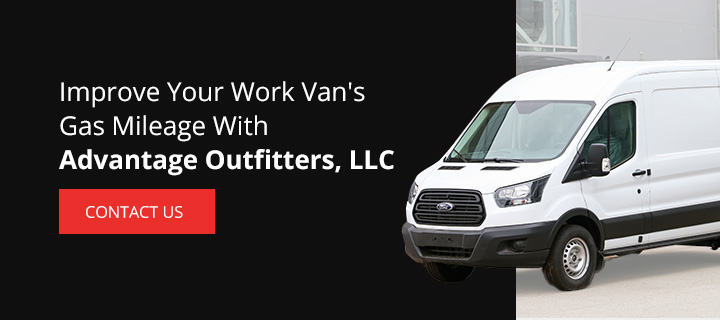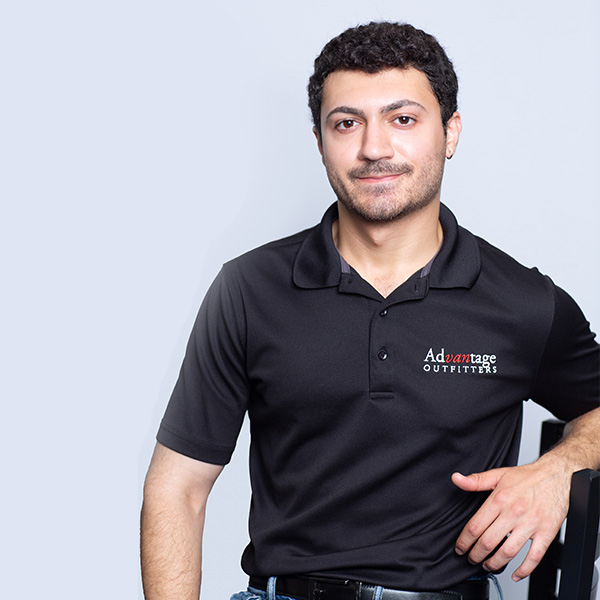Getting the Best Gas Mileage out of Your Work Van
30th Aug 2022
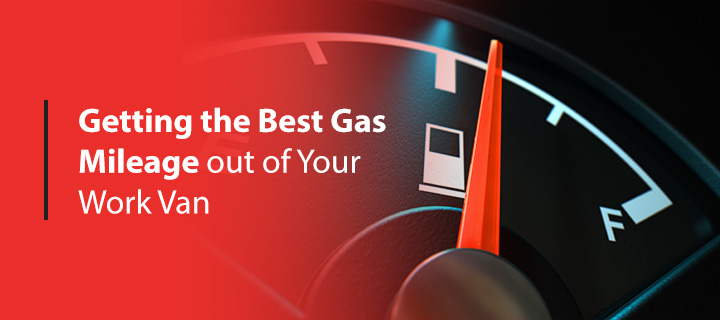
A work van is an asset in many industries, but with rising gas prices, many professionals are looking for ways to get the best possible gas mileage out of their transportation. Keep reading for tips on how to get good gas mileage on your work vehicle.
What Is the Importance of Getting Good Gas Mileage?
When you drive a work van, fuel is a business expense. Good gas mileage can save hundreds of dollars on fuel annually, allowing you to make more efficient use of your funding. Getting superior gas mileage for your van can also help with:
- Driving more efficiently: Changing your driving habits can preserve the quality of your work van. You can potentially avoid repairs and other issues caused by frequently inefficient, careless driving.
- Using extra money for upfits: If you're self-employed, these savings can especially make a difference. Use the money you save for work van accessories to make your work even more efficient.
- Improving sustainability: Fuel-efficient vehicles are better for economic and environmental sustainability. If you're trying to promote green practices for your business, getting good gas mileage is great to strive for.
How to Get Good Gas Mileage for Your Work Van
Want some tips for the best gas mileage that can help you save money? Below are factors that influence your vehicle's fuel economy:
1. Maintenance and Repairs
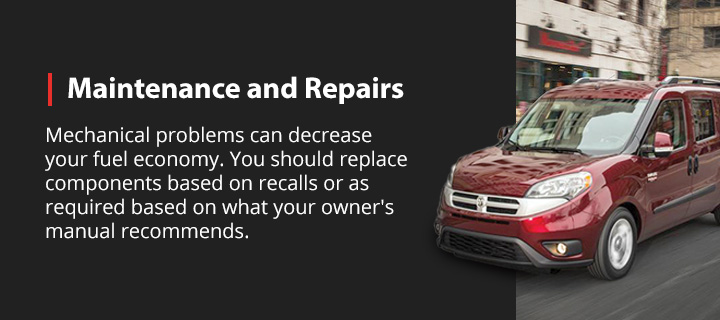
Putting off maintenance will cause your vehicle to lose efficiency. Even components that are seemingly unrelated to your gas mileage can affect it. Anything from clogged air filters to ineffective oxygen sensors can lower the vehicle's gas mileage.
Mechanical problems can decrease your fuel economy. You should replace components based on recalls or as required based on what your owner's manual recommends. Ignoring service intervals will result in the need for further maintenance.
If you notice a service light on your dash, it's best to get your vehicle checked out for repairs as soon as possible. Service lights warn the operator about a failure in an important vehicle component that makes it drivable, like the mechanisms related to its fuel consumption or emissions. Under federally mandated warranty, repairs to any component of your vehicle's emissions components are free for the first eight years or if the vehicle has under 80,000 miles.
2. Software Updates and Part Upgrades
Make sure you get all the appropriate software and part upgrades for your vehicle according to the manufacturer's recommendations. If your vehicle has fewer than 80,000 miles, the upgrades may be free. Your dealer also can update other modules to provide the most fuel-efficient operation.
Keeping up with updates will generally help your vehicle run at its best possible efficiency. Some of the updates are unrelated to efficiency, but they make your work van easier to drive or navigate. Driving smoothly and consistently also helps with fuel efficiency, so avoid underestimating how much the update can help.
3. Underinflated Tires
A tire pressure drop decreases your fuel economy. You can prevent getting stranded on the job if you keep a tire gauge and inflator in your work van for potential emergencies.
You can also check your tire pressures every week to anticipate and correct small dips, which might be caused by changes in altitude and temperature. Make sure you initially test the tire pressure after periods when the vehicle has remained stationary for at least eight hours. You might get inaccurate tire pressure readings if you try to take measurements after driving the work van, even after a short distance.
4. Overinflated Tires
Like underinflating your tires, overinflating your tires can also have a negative effect on your work van's fuel economy. Avoid inflating your vehicle's tires past the manufacturer's recommended pounds per square inch (psi), which you can usually find on the driver-side B pillar or your manual. Some drivers may slightly overinflate the tires in anticipation of seasonal changes in pressure, but overinflated tires wear faster and ride less smoothly.
You also increase your likelihood of experiencing a blowout when you overinflate. The recommended tire pressure is the best for your vehicle's safety, handling and fuel economy. Always check the tire pressure after you have your vehicle serviced. Mistakes can happen in auto shops, and letting out a small puff of air is easily done by pushing the pin in the middle of the valve stem down.
5. The Vehicle's Weight
The overall weight of your vehicle includes your equipment, tools and the entirety of the cargo. Fuel economy decreases with additional weight. If your work requires a lot of heavy equipment, you might have to get better gas mileage in other ways.
Have your work vehicle weighed to check how many extra pounds you're carrying. See if you can reduce the weight by at least 100 pounds, which can help improve your fuel economy. Have your workers evaluate what they'll need for upcoming jobs that day to lighten work van load. But they shouldn't unpack vans entirely, as not having a necessary tool or part could mean driving back to the shop to get it, ultimately using more fuel than a lighter van saves.
You can also keep your work vans light by choosing durable equipment that's also lightweight. If you need interior van liners, strong but light options won't noticeably impact your fuel efficiency. Opting for aluminum shelving packages lets you organize your van without adding too much weight.
6. The Drag
Your fuel economy is also impacted by the drag on your vehicle. You can use aerodynamically designed ladder racks or try removing other items on the outside of the van to reduce wind resistance. Lowered windows can also result in drag, so make sure you keep them rolled up.
7. The Type of Oil
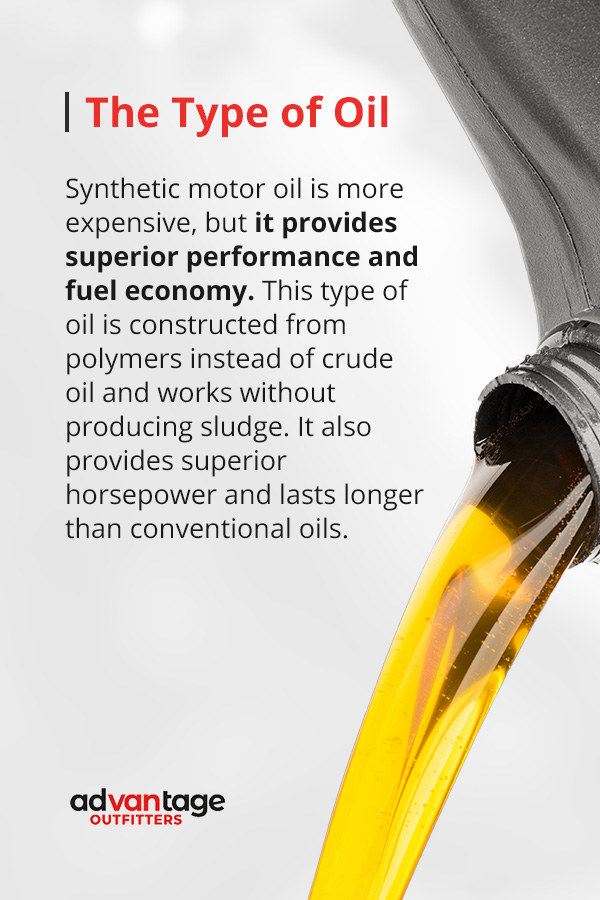
Synthetic motor oil is more expensive, but it provides superior performance and fuel economy. This type of oil is constructed from polymers instead of crude oil and works without producing sludge. It also provides superior horsepower and lasts longer than conventional oils.
8. Average Speeds
You use more gas when you drive faster. If you go long distances at highway speeds, you will have a worse fuel economy than if you drive at consistently lower speeds. Frequent starts and stops also affect your fuel economy, and many vehicles experience the best gas mileage at speeds between 45 and 50 mph.
When the costs of fuel increased in 2008, lawmakers became concerned with how fuel efficiency plunges when speed begins to increase over 55 mph. Modern vehicles are designed to be more fuel-efficient, but you lose a percentage of your overall fuel economy as your speed continues to increase.
Driving safely and smoothly will help you maintain the best possible fuel economy. You might have to frequently drive your work vehicle faster than 55 mph between cities, but you can still save on fuel if you stay at a consistent speed.
8. Horsepower
Having greater horsepower usually means the vehicle also has a worse fuel economy. When the engine is larger and more powerful, it requires more fuel, even without hauling anything. If you make modifications to the vehicle's performance, it might also require more fuel than it would in its standard condition. Newer vehicles tend to have superior fuel economy, with less of a focus on their power.
9. Running the Air Conditioner
If you leave the air conditioner on at full blast during the hotter times of the year, your fuel economy will worsen. The air conditioner takes a while to reduce the temperature within your interior. Instead of blasting the air conditioner, roll down your windows to vent the heat before you drive.
The air outside the van will be slightly cooler than the air trapped in the interior on a hot day. Rolling the windows down can help reduce the temperature before you start to use more gas with the air conditioner turned up. Keep the AC on low if you do need it.
10. Planning Your Trips
Instead of making trips as needed, try to plan ahead by scheduling your work days so you can group trips to specific areas or cities. You will save on gas if you plan to work jobs in a specific region on a certain day instead of taking any job that comes up any day of the week. Making fewer trips across towns or areas will result in lower fuel usage.
If you use your work vehicle for personal tasks, such as picking up groceries, see if you can arrange to complete these tasks on a specific day or over the weekend.
You can use an app or an online GPS map to set more than one destination and optimize your driving times between them. Traveling fewer miles throughout your work week can make a big difference in your fuel usage, even within a month.
11. Heavy Traffic
If you can avoid driving through rush hour traffic, try to plan around it. When you get stuck in traffic, your vehicle continues to burn fuel when you're idling or driving slowly to nudge through. If you work for an employer, try to get to work a little earlier and leave a little later to avoid the heavy traffic. An adjustment of only 20 minutes could improve your fuel economy significantly depending on the traffic you currently deal with.
If you can't adjust your schedule, try to avoid the heavy traffic by taking alternate routes. The shortest route is sometimes less fuel-efficient than a longer route with the least traffic and fewer lights.
12. Cruise Control
Relying on your cruise control when conditions are appropriate can improve your vehicle's fuel economy. Cruise control is better for gas mileage, and is best used on flat roads with few traffic lights or sharp turns, especially when the roads are familiar. This feature allows you to maintain your speed without putting pressure on the engine with inconsistent movements.
If you use cruise control, stay aware of your surroundings and avoid setting it above the speed limit. Turn on cruise control when you have long trips between jobs and can afford to use it.
13. Idling
When your vehicle idles, you get zero miles to the gallon while continuing to consume fuel. If you expect to have to wait longer than 10 seconds before you're able to drive, turn your vehicle off to avoid burning excess fuel. Keep the vehicle turned off while you're waiting for another party to get in your van.
14. The Alignment
If your tires are misaligned, they will drag instead of moving smoothly forward. Having poorly aligned tires can reduce your fuel efficiency and result in the tires needing to be replaced more quickly.
When your tires are out of balance, your steering wheel may vibrate, and one of your auto lights might warn you about the condition. Your tires will eventually start to get uneven wear, which can lower your gas mileage even more. To improve your performance, get your tires rotated regularly.
15. Spark Plugs
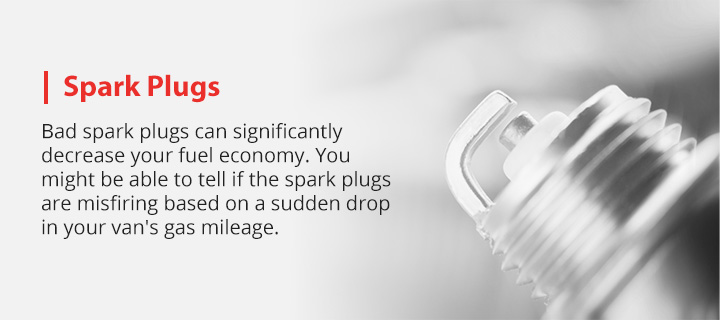
Bad spark plugs can significantly decrease your fuel economy. You might be able to tell if the spark plugs are misfiring based on a sudden drop in your van's gas mileage.
Other ways to tell if you have one or more bad spark plugs include the vehicle surging or making rough noises when idling or when you are trying to start it. Find the best fuel-efficient spark plugs and replace them, and that should fix the problem.
16. Gas Prices
Check local gas prices using an app such as Waze or GasBuddy. If you limit your stops at stations with the best deals on gas, you will save a little money each time you have to fuel up. Your vehicle's fuel economy will remain unchanged if you pay closer attention to gas prices, but lowering your fuel expenses benefits you in the same way.
17. Driving Habits
Speeding, rapidly accelerating and suddenly braking are all poor driving habits that will increase your vehicle's overall fuel consumption. Rapid starts and stops might affect the fuel economy of some vehicles more than others, but if you drive sensibly, you are certain to save on gas regardless of your van's original fuel efficiency.
Drive carefully even when you are in a hurry to get to a job site. Avoid congested areas of traffic, and always give yourself enough time to reach a destination.
18. Filling Your Tank
To lower your gas mileage, you need to know what it currently is. Your work van may track this information and display it on the dash. Otherwise, scheduling a regular gas stop routine can help you estimate how much gas you're using on a weekly basis. You can then make your work days more time-efficient and track how your fuel consumption changes.
Improve Your Work Van's Gas Mileage With Advantage Outfitters, LLC
Advantage Outfitters provides custom accessories for work vans that can help you organize your equipment, evenly distribute the weight of your equipment in your cargo area and make your vehicle more efficient. Contact us today to learn more about our products.

